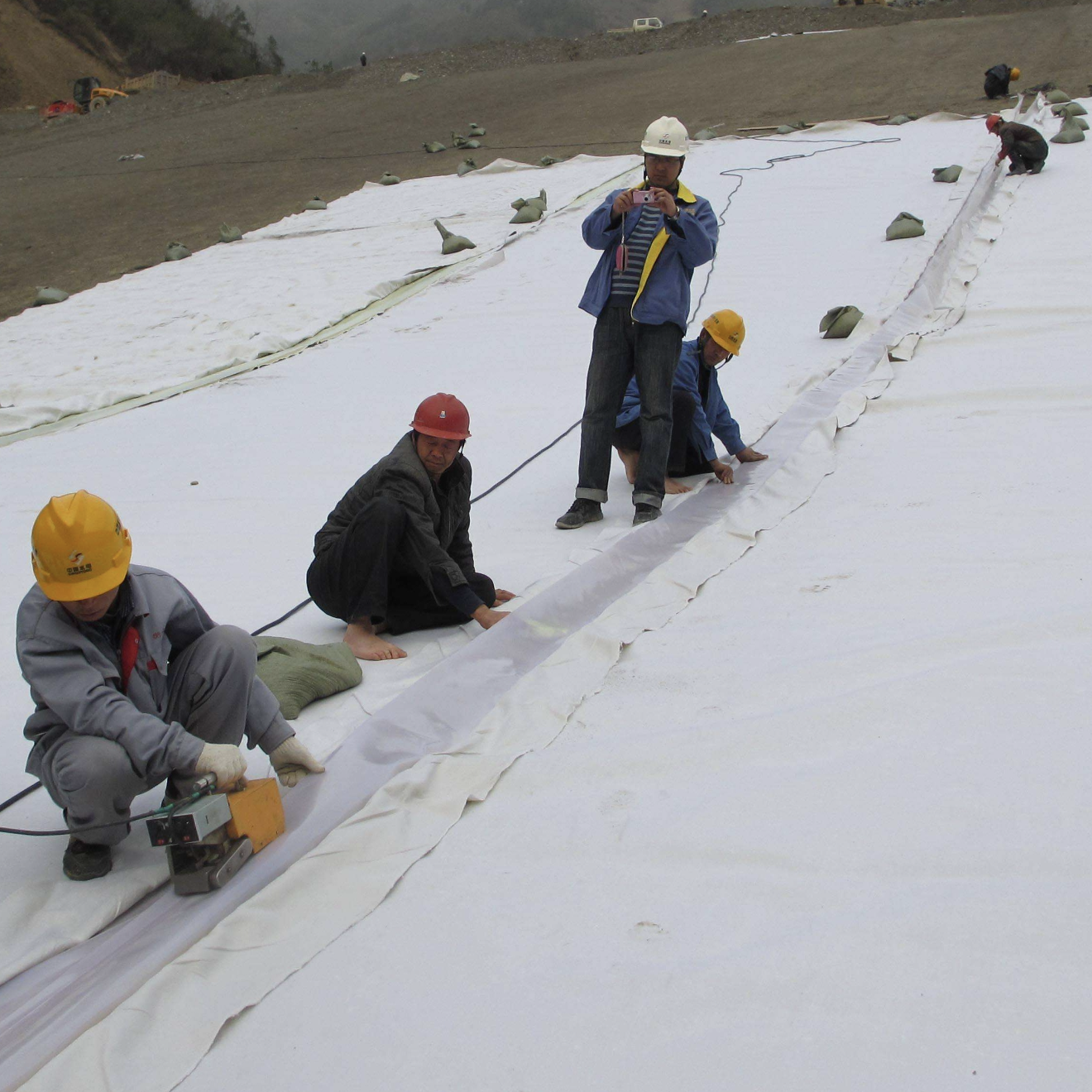
-
 Español
Español
-
 Portugues
Portugues
-
 Pусский
Pусский
-
 Français
Français
-
 Deutsch
Deutsch
-
 日本語
日本語
-
 한국어
한국어
-
 العربية
العربية
-
 Italiano
Italiano
-
 Nederlands
Nederlands
-
 Ελληνικά
Ελληνικά
-
 Svenska
Svenska
-
 Polski
Polski
-
 ไทย
ไทย
-
 Türk dili
Türk dili
-
 हिन्दी
हिन्दी
-
 Indonesia
Indonesia
-
 Melayu
Melayu
-
 Tiếng Việt
Tiếng Việt
-
 中文
中文
-
 dansk
dansk
-
 Magyar
Magyar
-
 қазақ
қазақ
-
 বাংলা
বাংলা
-
 עִברִית
עִברִית
-
 čeština
čeština
-
 Soomaali
Soomaali
-
 မြန်မာ
မြန်မာ
-
 فارسی
فارسی
-
 українська
українська
-
 norsk
norsk
-
 Gaeilge
Gaeilge
-
 беларускі
беларускі
-
 Română
Română
-
 ພາສາລາວ
ພາສາລາວ
-
 Filipino
Filipino
-
 lietuvių
lietuvių
-
 Cymraeg
Cymraeg
-
 македонски
македонски
-
 Suomalainen
Suomalainen
-
 slovenský
slovenský
-
 o'zbek
o'zbek
-
 اردو
اردو
-
 հայերեն
հայերեն
-
 Igbo
Igbo
-
 български
български
-
 سنڌي
سنڌي
-
 Shona
Shona
-
 සිංහල
සිංහල
-
 Hrvatski
Hrvatski
-
 íslenskur
íslenskur
-
 galego
galego
-
 català
català
-
 Zulu South Africa
Zulu South Africa
-
 Afrikaans isiXhosa
Afrikaans isiXhosa
-
 ಕನ್ನಡ
ಕನ್ನಡ
-
 lëtzebuergesch
lëtzebuergesch
-
 Indonésia Sunda
Indonésia Sunda
-
 basa jawa
basa jawa
-
 ગુજરાતી
ગુજરાતી
-
 Кыргызча
Кыргызча
-
 тоҷикӣ
тоҷикӣ
-
 Србија
Србија
-
 Twi
Twi
-
 Hawaii
Hawaii
-
 Cebu
Cebu
-
 नेपाल
नेपाल
-
 euskara
euskara
-
 Kurdî
Kurdî
-
 frissi
frissi
-
 יידיש
יידיש
-
 latvija
latvija
-
 slovenija
slovenija
-
 kiswahili
kiswahili
-
 ਪੰਜਾਬ
ਪੰਜਾਬ
-
 پښتو
پښتو
-
 საქართველოს
საქართველოს
-
 hua moni
hua moni
-
 bosna
bosna
-
 తెలుగు
తెలుగు
-
 தமிழ்
தமிழ்
-
 Kreyòl ayisyen
Kreyòl ayisyen
-
 Eesti
Eesti
-
 Corsica
Corsica
-
 Yoruba
Yoruba
-
 Gàidhlig na h-Alba
Gàidhlig na h-Alba
-
 Samoa
Samoa
-
 Монгол
Монгол
-
 Hausa
Hausa
-
 Azərbaycan
Azərbaycan
-
 አማራ
አማራ
-
 Shqipëria
Shqipëria
-
 Malagasy
Malagasy
-
 मराठी
मराठी
-
 മലയാളം
മലയാളം
-
 Malta
Malta
-
 ខ្មែរ
ខ្មែរ
-
 Chicheva
Chicheva
-
 中文(繁体)
中文(繁体)
-
 ଓଡିଆ
ଓଡିଆ
-
 Setswana
Setswana
-
 Afrikaans
Afrikaans
-
 Aymara
Aymara
-
 Башҡорт
Башҡорт
-
 Türkmenler
Türkmenler
-
 ትግሪኛ
ትግሪኛ
-
 Afaan Oromoo
Afaan Oromoo
-
 অসমীয়া
অসমীয়া
-
 Kinyarwanda
Kinyarwanda
-
 Ilocano
Ilocano
-
 Wolof
Wolof
-
 अवधी
अवधी
-
 Oluganda
Oluganda
-
 Bikol
Bikol
-
 Fulɓe
Fulɓe
-
 Kikongo
Kikongo
-
 Sango
Sango
-
 ދިވެހި
ދިވެހި
-
 Lingala
Lingala
-
 मैथिली
मैथिली
-
 Tsonga
Tsonga
-
 ꯃꯦꯏ ꯊꯥꯏ꯫
ꯃꯦꯏ ꯊꯥꯏ꯫
-
 brezhoneg
brezhoneg
-
 Furlan
Furlan
-
 नेवा
नेवा
-
 རྫོང་ཁ
རྫོང་ཁ
-
 Santali
Santali
-
 Аҧсуа
Аҧсуа
-
 Нохчийн
Нохчийн
-
 Чӑваш
Чӑваш
-
 Татар
Татар
-
 Batak Karo
Batak Karo
-
 دری
دری
-
 Diura
Diura
-
 Fengyu
Fengyu
-
 Eʋegbe
Eʋegbe
-
 Iban
Iban
-
 Fiji
Fiji
-
 Tonga
Tonga
-
 Inuktitut
Inuktitut
-
 Nahuatl
Nahuatl
-
 maaya yucatec
maaya yucatec
-
 Runasimi
Runasimi
-
 guarani
guarani
-
 Qafar
Qafar
-
 Acholi
Acholi
-
 Dinka
Dinka
-
 Luo
Luo
-
 Lundi
Lundi
-
 isiNdebele
isiNdebele
-
 Tshivenḓa
Tshivenḓa
-
 Sesotho sa Leboa
Sesotho sa Leboa
-
 Sesotho sa Borwa
Sesotho sa Borwa
-
 Ndumbe
Ndumbe
-
 Papuan Pidgin
Papuan Pidgin
-
 Rromani ćhib
Rromani ćhib
-
 Thok Nath
Thok Nath
yuxiatugong@163.com
+86 18353494641
-
 Español
Español
-
 Portugues
Portugues
-
 Pусский
Pусский
-
 Français
Français
-
 Deutsch
Deutsch
-
 日本語
日本語
-
 한국어
한국어
-
 العربية
العربية
-
 Italiano
Italiano
-
 Nederlands
Nederlands
-
 Ελληνικά
Ελληνικά
-
 Svenska
Svenska
-
 Polski
Polski
-
 ไทย
ไทย
-
 Türk dili
Türk dili
-
 हिन्दी
हिन्दी
-
 Indonesia
Indonesia
-
 Melayu
Melayu
-
 Tiếng Việt
Tiếng Việt
-
 中文
中文
-
 dansk
dansk
-
 Magyar
Magyar
-
 қазақ
қазақ
-
 বাংলা
বাংলা
-
 עִברִית
עִברִית
-
 čeština
čeština
-
 Soomaali
Soomaali
-
 မြန်မာ
မြန်မာ
-
 فارسی
فارسی
-
 українська
українська
-
 norsk
norsk
-
 Gaeilge
Gaeilge
-
 беларускі
беларускі
-
 Română
Română
-
 ພາສາລາວ
ພາສາລາວ
-
 Filipino
Filipino
-
 lietuvių
lietuvių
-
 Cymraeg
Cymraeg
-
 македонски
македонски
-
 Suomalainen
Suomalainen
-
 slovenský
slovenský
-
 o'zbek
o'zbek
-
 اردو
اردو
-
 հայերեն
հայերեն
-
 Igbo
Igbo
-
 български
български
-
 سنڌي
سنڌي
-
 Shona
Shona
-
 සිංහල
සිංහල
-
 Hrvatski
Hrvatski
-
 íslenskur
íslenskur
-
 galego
galego
-
 català
català
-
 Zulu South Africa
Zulu South Africa
-
 Afrikaans isiXhosa
Afrikaans isiXhosa
-
 ಕನ್ನಡ
ಕನ್ನಡ
-
 lëtzebuergesch
lëtzebuergesch
-
 Indonésia Sunda
Indonésia Sunda
-
 basa jawa
basa jawa
-
 ગુજરાતી
ગુજરાતી
-
 Кыргызча
Кыргызча
-
 тоҷикӣ
тоҷикӣ
-
 Србија
Србија
-
 Twi
Twi
-
 Hawaii
Hawaii
-
 Cebu
Cebu
-
 नेपाल
नेपाल
-
 euskara
euskara
-
 Kurdî
Kurdî
-
 frissi
frissi
-
 יידיש
יידיש
-
 latvija
latvija
-
 slovenija
slovenija
-
 kiswahili
kiswahili
-
 ਪੰਜਾਬ
ਪੰਜਾਬ
-
 پښتو
پښتو
-
 საქართველოს
საქართველოს
-
 hua moni
hua moni
-
 bosna
bosna
-
 తెలుగు
తెలుగు
-
 தமிழ்
தமிழ்
-
 Kreyòl ayisyen
Kreyòl ayisyen
-
 Eesti
Eesti
-
 Corsica
Corsica
-
 Yoruba
Yoruba
-
 Gàidhlig na h-Alba
Gàidhlig na h-Alba
-
 Samoa
Samoa
-
 Монгол
Монгол
-
 Hausa
Hausa
-
 Azərbaycan
Azərbaycan
-
 አማራ
አማራ
-
 Shqipëria
Shqipëria
-
 Malagasy
Malagasy
-
 मराठी
मराठी
-
 മലയാളം
മലയാളം
-
 Malta
Malta
-
 ខ្មែរ
ខ្មែរ
-
 Chicheva
Chicheva
-
 中文(繁体)
中文(繁体)
-
 ଓଡିଆ
ଓଡିଆ
-
 Setswana
Setswana
-
 Afrikaans
Afrikaans
-
 Aymara
Aymara
-
 Башҡорт
Башҡорт
-
 Türkmenler
Türkmenler
-
 ትግሪኛ
ትግሪኛ
-
 Afaan Oromoo
Afaan Oromoo
-
 অসমীয়া
অসমীয়া
-
 Kinyarwanda
Kinyarwanda
-
 Ilocano
Ilocano
-
 Wolof
Wolof
-
 अवधी
अवधी
-
 Oluganda
Oluganda
-
 Bikol
Bikol
-
 Fulɓe
Fulɓe
-
 Kikongo
Kikongo
-
 Sango
Sango
-
 ދިވެހި
ދިވެހި
-
 Lingala
Lingala
-
 मैथिली
मैथिली
-
 Tsonga
Tsonga
-
 ꯃꯦꯏ ꯊꯥꯏ꯫
ꯃꯦꯏ ꯊꯥꯏ꯫
-
 brezhoneg
brezhoneg
-
 Furlan
Furlan
-
 नेवा
नेवा
-
 རྫོང་ཁ
རྫོང་ཁ
-
 Santali
Santali
-
 Аҧсуа
Аҧсуа
-
 Нохчийн
Нохчийн
-
 Чӑваш
Чӑваш
-
 Татар
Татар
-
 Batak Karo
Batak Karo
-
 دری
دری
-
 Diura
Diura
-
 Fengyu
Fengyu
-
 Eʋegbe
Eʋegbe
-
 Iban
Iban
-
 Fiji
Fiji
-
 Tonga
Tonga
-
 Inuktitut
Inuktitut
-
 Nahuatl
Nahuatl
-
 maaya yucatec
maaya yucatec
-
 Runasimi
Runasimi
-
 guarani
guarani
-
 Qafar
Qafar
-
 Acholi
Acholi
-
 Dinka
Dinka
-
 Luo
Luo
-
 Lundi
Lundi
-
 isiNdebele
isiNdebele
-
 Tshivenḓa
Tshivenḓa
-
 Sesotho sa Leboa
Sesotho sa Leboa
-
 Sesotho sa Borwa
Sesotho sa Borwa
-
 Ndumbe
Ndumbe
-
 Papuan Pidgin
Papuan Pidgin
-
 Rromani ćhib
Rromani ćhib
-
 Thok Nath
Thok Nath

News Center
News Center
HOT PRODUCT
Mining Composite Geomembrane for Heap Leaching Operations
2025-10-20 08:17:40

Mining Composite Geomembrane for Heap Leaching Operations
1. Introduction
Heap leaching is a widely used hydrometallurgical process for extracting metals such as gold, silver, copper, and uranium from low-grade ores. The process involves stacking crushed ore into large piles (heaps) and applying a leaching solution (e.g., cyanide for gold or sulfuric acid for copper) to dissolve the target metals. The pregnant solution containing the dissolved metals is then collected and processed further to recover the metals.
A critical component of heap leaching operations is the liner system, which prevents the leaching solution from contaminating the surrounding environment. Composite geomembranes have become a preferred choice for heap leach pads due to their superior impermeability, chemical resistance, and durability. This paper explores the role of composite geomembranes in heap leaching operations, their properties, installation methods, and environmental benefits.
2. Composite Geomembrane: Definition and Composition
A composite geomembrane is a multi-layered synthetic material designed to provide high impermeability and mechanical strength. It typically consists of:
- Geomembrane Layer: A flexible, impermeable polymer sheet (e.g., HDPE, LLDPE, PVC) that acts as a primary barrier against fluid migration.
- Geotextile Layer: A nonwoven or woven fabric that provides cushioning, puncture resistance, and drainage capabilities.
- Reinforcement Layer (Optional): Some composite geomembranes include a reinforcing grid or scrim to enhance tensile strength and tear resistance.
The combination of these layers ensures long-term performance in harsh mining environments, including exposure to aggressive chemicals, UV radiation, and mechanical stresses.
3. Advantages of Composite Geomembranes in Heap Leaching
3.1. Superior Chemical Resistance
Heap leaching solutions often contain strong acids (e.g., sulfuric acid) or alkaline cyanide solutions. Composite geomembranes, particularly those made from high-density polyethylene (HDPE), exhibit excellent resistance to these chemicals, ensuring long-term integrity.
3.2. High Impermeability
The geomembrane layer provides an extremely low permeability coefficient (typically <1×10⁻¹² cm/s), preventing leaching solutions from seeping into the ground and contaminating groundwater.
3.3. Enhanced Durability
The geotextile layer protects the geomembrane from punctures caused by sharp rocks or ore particles, while the reinforcement layer (if present) improves resistance to mechanical stresses.
3.4. UV and Weather Resistance
Many composite geomembranes are formulated with UV stabilizers to withstand prolonged exposure to sunlight, ensuring performance in open-air heap leach pads.
3.5. Cost-Effectiveness
Although the initial cost may be higher than single-layer geomembranes, composite geomembranes reduce long-term maintenance and repair expenses by minimizing leaks and failures.
4. Installation of Composite Geomembranes in Heap Leach Pads
Proper installation is crucial to the effectiveness of composite geomembranes. The key steps include:
4.1. Subgrade Preparation
- The subgrade must be smooth, compacted, and free of sharp objects that could puncture the liner.
- A layer of fine-grained soil or sand may be used to cushion the geomembrane.
4.2. Liner Deployment
- Rolls of composite geomembrane are unrolled and positioned carefully to minimize wrinkles and folds.
- Adjacent sheets are overlapped (typically 6-12 inches) and welded using thermal or chemical fusion techniques.
4.3. Seam Testing
- All seams must be tested for integrity using methods such as air pressure testing, vacuum testing, or ultrasonic inspection.
4.4. Protection Layer Installation
- A protective layer (e.g., gravel or sand) is placed over the geomembrane to shield it from mechanical damage during ore placement.
4.5. Leachate Collection System
- A network of perforated pipes is installed beneath the liner to collect and channel the pregnant solution to processing facilities.
5. Environmental and Regulatory Considerations
Heap leaching operations must comply with strict environmental regulations to prevent groundwater contamination. Composite geomembranes play a vital role in meeting these requirements by:
- Preventing Leachate Leakage: The impermeable barrier ensures that leaching solutions do not escape into the environment.
- Facilitating Monitoring: Secondary liners and leak detection systems can be integrated to provide early warning of potential failures.
- Supporting Mine Closure and Rehabilitation: After heap leaching is completed, the geomembrane can be covered with soil and vegetation to restore the site.
6. Challenges and Mitigation Strategies
Despite their advantages, composite geomembranes face challenges such as:
- Puncture Risks: Sharp ore particles can damage the liner. Using thicker geomembranes or additional protective layers can mitigate this.
- Thermal Expansion/Contraction: Temperature fluctuations may cause liner movement. Proper anchoring and stress relief designs are essential.
- Chemical Degradation: Some aggressive chemicals may degrade certain polymers. Material selection must be based on chemical compatibility tests.
7. Future Trends in Composite Geomembrane Technology
Advancements in geomembrane technology include:
- Smart Liners with Sensors: Embedded sensors can detect leaks or stress points in real-time.
- Eco-Friendly Materials: Research is ongoing into biodegradable or recyclable geomembranes.
- Improved Welding Techniques: Automated welding robots enhance seam quality and installation speed.
8. Conclusion
Composite geomembranes are indispensable in modern heap leaching operations, providing a reliable, durable, and environmentally compliant solution for leach pad lining. Their multi-layered structure ensures resistance to chemical, mechanical, and environmental stresses, making them a preferred choice in the mining industry. Proper installation, maintenance, and monitoring further enhance their performance, ensuring sustainable and efficient metal recovery processes.
As heap leaching continues to evolve, advancements in geomembrane technology will further improve safety, efficiency, and environmental protection in mining operations worldwide.








 Phone
Phone
Comment
(0)